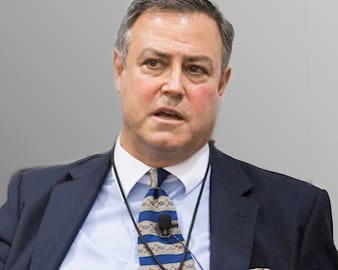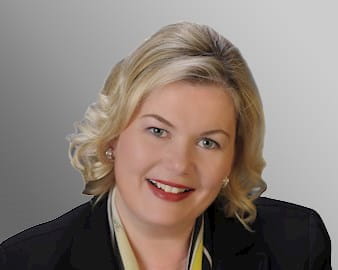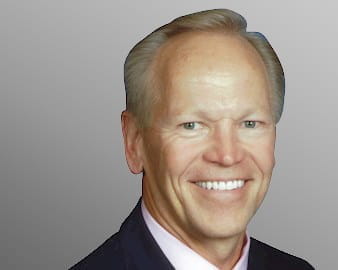
Three alumni share insights on how they profitably navigate the complex business of funding projects in alternative and conventional energy markets.
- By
- October 10, 2015
- Energy


The Challenge: In 1999, Ted Brandt cofounded Marathon Capital in Bannockburn, Illinois, a $25 million investment bank focused on renewable energy. The original compensation structurehewed to the industry norm of a steady balance between salary and bonus, based on both individual and company performance. But in the first several years, Marathon was short of capital and the model was unsustainable. How could the company devise a system of incentives while maintaining the necessary cash flow to sustain the business, Brandt wondered.
The Strategy: For the next three years, Marathon slashed salaries and paid bankers big bonuses when deals closed. Revenues grew, but that led to new challenges.
“Since the change, revenues have grown at about a 15 percent compounded rate year over year.”
— Ted Brandt
This “eat-what-you-kill” model, as Brandt calls it, discouraged teamwork and was unfair to younger bankers who had no say in what projects to join. Also, by paying out bonuses before fixed costs, Marathon had few profits. Compensation ran about 90 to 95 percent of revenues. In comparison, similar banks pay, at most, about 62 to 65 percent of revenues in compensation. As revenues consistently exceeded fixed costs, Brandt resolved to change the model.
Starting in 2009, Marathon increased salaries and paid discretionary bonuses based on half of the difference between revenues and fixed costs, the latter of which are paid first. Marathon acquired new talent and lost only one or two employees who preferred the previous model. Since the change, revenues have grown at about a 15 percent compounded rate year over year. Cash flow and liquidity are no longer issues and Marathon’s pretax operating margins approach 25 percent.
The Takeaway: Finding a balance between salary and bonus levels, equity participation, and an employee’s long-term objectives, Brandt said, is the key to growth, consistency, and employee retention.

The Challenge: In 2012, Kristina Peterson was vice president, solar business unit, at EDF Renewable Energy, the independent renewable energy development arm of Electricité de France, the French electric utility. She needed to determine whether her company should invest in the new solar market in Massachusetts. The state had launched a mandate to purchase the output from 400 megawatts of solar projects in 2010. Under the Solar Renewable Energy Certificate program, power producers would issue one certificate for each megawatt hour of electricity generated from solar photovoltaic projects. The certificates were sold separately from the electricity generated and their value would be determined by supply and demand. “The question was, at what prices would the certificates trade once the market clearinghouse began to function?” Peterson recalled. “What if project developers reached the 400 megawatt cap more quickly and the state did not purchase more solar beyond the cap?”
The Strategy: Peterson and her team modeled that the certificates would be worth around 77 percent of the cash flow value of a project in most instances. The compliance formulae did not set a clear floor price at which the state clearinghouse would purchase unsold certificates and thereby protect market participants from downside price risk. Without a clear floor, it was difficult to value return on invested capital to investors and developers.
“What if project developers reached the 400 megawatt cap more quickly and the state did not purchase more solar beyond the cap?”
— Kristina Peterson
Peterson created financial forecasts that showed high, medium, and low project-build-out price scenarios. With this planning, the company successfully developed several projects and generated unlevered internal rates of return in the mid-to-upper teens. Massachusetts 2015 certificates currently are trading at $465 per megawatt hour; the floor price was predicted to be $270.
The Takeaway: Careful analysis, scenario planning, and financial forecasting, Peterson said, can yield project developers higher-than-expected financial returns with low operating risk in the solar power generation market.

The Challenge: In 2013, Jerry Stalun was managing director and head of global power investments at EIG Global EnergyPartners. His team had the opportunity tofinance an independent developer building power plants that use natural gas from the Marcellus Shale region of Pennsylvania. “The developer needed to quickly raise incremental capital because of looming deadlines for two projects in the region,” Stalun said.
The Strategy: EIG was familiar with the Marcellus natural gas supply, as well as the pricing dynamics for electricity in the region. As a result, Stalun’s team was able to model and analyze the financing opportunity and close the transaction in record time. EIG decided to invest its fund’s capital in a $100 million mezzanine debt investment.
Although few power plants were being built at the time, the proposed sites were sitting on top of a rich shale play and provided competitively priced power, Stalun recalled. Only limited pipeline construction and infrastructure were needed. In addition, Stalun enjoyed a long-term relationship with the developer’s CFO,who could trust that EIG would complete the deal quickly.
“The developer needed to quickly raise incremental capital.”
— Jerry Stalun
“For this certainty in a tight time period, the developer was willing to pay a premium—a generous coupon and penalties for early prepayment,” Stalun said. The developer was able to begin construction with EIG’s mezzanine capital, supplementing with its own investor equity and senior debt. Construction continued as planned and commercial operation of the plants is forecasted to start next year.
The Takeaway: Careful analysis, scenario planning, and financial forecasting, Peterson said, can yield project developers higher-than-expected financial returns with low operating risk in the solar power generation market.
We'd love to hear your Booth memories, stories, connections...everything.